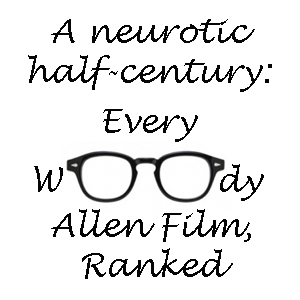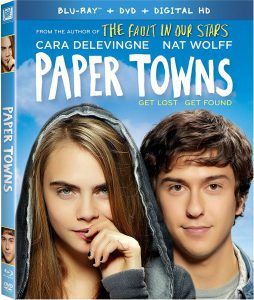On the surface, there’s a lot to like about “Paper Towns” (now available from Redbox), as a group of high school seniors goes on one last (or one FIRST, as the case may be) grand adventure before graduation. Quentin (Nat Wolff) and his friends explore the run-down urban areas of west Orlando for clues left by his next-door neighbor Margo (Cara Delevingne) about her whereabouts and eventually embark on a road trip to find her.
I like the concept of urban exploring in this era when parts of many major cities – sometimes, MOST of a city, as with Detroit — have been abandoned because of various economic forces. And “Paper Towns” – the latest adaptation of a John Green novel, following “The Fault in Our Stars” — also has a tasty metaphor right there in its title: Paper towns are fake towns printed on maps as a way to catch copyright infringers. Margo believes Orlando, despite being a real city where she has grown up, is a paper town filled with paper people, including herself. I don’t think that’s necessarily a knock against Orlando; I think she would’ve felt this way wherever she lived.
Margo is the sage of “Paper Towns,” which is either problematic or ironic depending on how generous you want to be. In the first part of the film, she pulls Q out of bed to serve as her getaway driver on a slew of revenge vandalism on some selected classmates: Her boyfriend who cheated on her; the friend with whom he cheated; and her best friend, Lacey (Halston Sage), who she wishes would’ve told her about the infidelity. Margo is impressed with Q’s performance as her partner in crime, and also gives him the advice that he’s cute when he’s confident, less so when he’s not.
The back half of the film is a road trip from Florida to upstate New York featuring Q, Lacey, Ben (Austin Abrams), Radar (Justice Smith) and Angela (Jaz Sinclair). The teens are all likable, but even the way they start out as archetypes and become more well-rounded feels formulaic.
After “(500) Days of Summer,” writers Scott Neustadter and Michael H. Weber earned a permanent spot on my list of writers where I’d have to check out all their work. “The Spectacular Now” and “The Fault in Our Stars” were great, although the TV sitcom “Friends with Benefits” was a misfire. I want to figure out a way to like “Paper Towns,” but I suspect it’s another misfire – a movie with decent parts that doesn’t fit together into a whole.
I’ll get a little SPOILER-y from here on out, so come back later if you haven’t seen the movie yet.
Like a less gut-wrenching “(500) Days,” “Paper Towns” is ultimately about a guy who puts a girl on a pedestal and learns a harsh lesson that women are flawed human beings just like men – they are not a man’s savior or key to contentment. Indeed, they may be wildly inconsistent and impossible to figure out. This is the case with Margo: When Q tracks her down near a paper town in New York, she claims she wasn’t leaving him clues to find her; it’s just something she does so people will know she’s safe. While Q has been smitten with Margo through his whole childhood, Margo doesn’t feel the same way; she believes she is an unformed person, and she has moved to this small town in New York state to find herself.

Although the lesson that women shouldn’t be built into superheroes in our heads is valid, Margo’s reaction to seeing Q is nonetheless irritating from a plot perspective. The string of clues starts with a picture in Margo’s bedroom window, which faces directly toward Q’s bedroom window. And the subsequent clues are not easy to follow; it’s hard to believe Margo placed those clues so her family would know she’s safe. Her parents had long ago accepted the fact that their daughter occasionally runs away and that she’ll eventually come back. (In one of his voiceovers, Q even expresses disgust with this hands-off parenting approach.) And we eventually learn that Margo calls her little sister every day to tell her she’s fine.
While it’s part of “Paper Towns’ ” point that Margo is flawed, the script and directorial flaws are another matter. It’s established that Margo’s folks have accepted that she occasionally splits town, yet they also call the cops to report her disappearance. This means that the little sister was not telling her folks that Margo was OK – even when the cops came over — which is horrible and ridiculous.
And then there’s the elephant in the room of this movie: The teens still have a few days of school left, but they hop into Q’s parents’ minivan and make the road trip without telling any of their parents. Even if all the parents were as laissez faire as Margo’s – which is off-the-charts unlikely, but it’s the only way to accept this plot point – it is an unappealing trait that they wouldn’t tell their parents about the trip. Along these same lines — although we’re led to believe that the teens make this trip up the coast in record time (always traveling at 72 mph and stopping only to fill up on gas) – they must be missing some school, and I don’t know of any public school that is OK with students randomly missing days without at least a cursory explanation.
Another elephant in the room is the money issue: Maybe the kids (none of whom have jobs) can pool together enough cash for the road trip, but Margo literally moves to a new place every now and then to “find herself.” Where does she stay? Hotels are expensive, and apartments usually require a time-period commitment. And there are also groceries to consider. Does she get a job to pay for these basic life necessities? If so, how does she feel about how that cuts into her dream life of doing nothing but reading and thinking?
Maybe there would’ve been a way to sell this by making it clear “Paper Towns” exists in a fantasy world, but director Jake Shreier doesn’t use that tactic. Like “American Graffiti” – the ultimate “end of high school” yarn — this movie is mostly grounded, and indeed, the ultimate message is that Q should not believe in magic (in the form of Margo), he should exist in reality. (This is irksome because Q does exist in reality; it was Margo who taught him to cut loose and take crazy chances, like she does. But in the end, she tells him he can’t live in a fantasy world. And she doesn’t follow her own advice, anyway, as she has the clichéd popular boyfriend and friends when the film begins. “Paper Towns” is an endless loop of inconsistencies.)
Another odd juxtaposition is that while these are ostensibly teens who are nervous or confused about their futures, or how to relate to girls, they all have an inner confidence and knack for saying the right thing as if it’s scripted for them. When Q learns the devastating truth that Margo wasn’t even into him, he shrugs it off with a thoughtful voiceover. When the characters in “Paper Towns” learn a lesson, they accept it and file it away in the way that a robot might learn a new fact. The idea of teens speaking with scripted cleverness has been controversial since the premiere of “Dawson’s Creek” in 1998, and I’ve always defended the conceit as a style choice; I’ll do the same for “Paper Towns.”
But what’s not excusable is that the “Paper Towns” kids are so untouched by what happens to them, as if they are just letting the life experiences happen and then checking them off a list. Even when embarking on an insane road trip, they are constantly thoughtful and self-aware. I briefly suspected that this movie marks the point where I can no longer relate to coming-of-age movies, because of some sort of monumental shift in the nature of teenagers in the last 20 years (I do think today’s teens are savvier about the world than teens of the past, but not to the point of a sea change). But IMDB voters – a cohort presumably dominated by the film’s target audience — give “Paper Towns” a rather low 6.5.
Unlike the previous works in the Neustadter/Weber oeuvre – and unlike Green’s “Fault” – “Paper Towns” is cynical and above it all. It’s made-up and empty, like a paper town. If that was part of the movie’s point, it’s an unsatisfying one.

